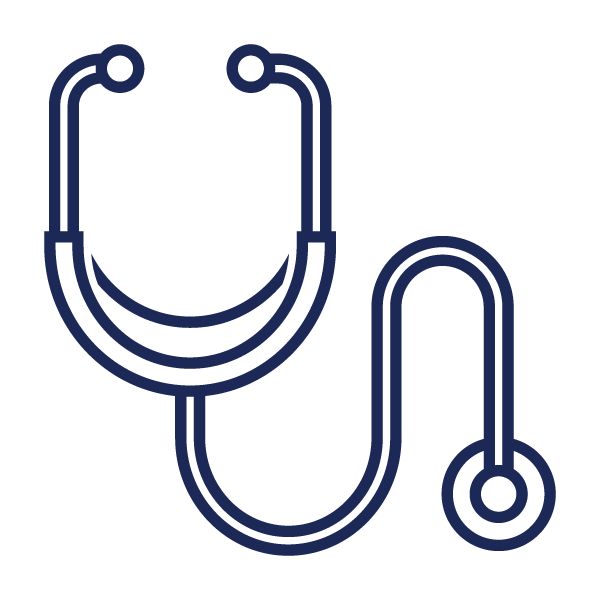FAQ
Find Answers to Your Questions About Our Services

Where Patients Matter Most
At Healthworx, your well-being is our top priority. Our dedicated team is committed to facilitating your swift recovery and overall wellness. Each person’s body is unique, so the way they respond to treatment might not be the same for everyone.
One of the transformative therapies we offer is Cranial Facial Release. This remarkable technique has demonstrated profound effects in alleviating a wide range of conditions. However, it’s important to remember that because we are all different, how we react to this treatment can vary from person to person.
Our approach revolves around personalized care. We acknowledge that there is no one-size-fits-all solution when it comes to health. Factors such as your medical history, current condition, and individual body composition play a pivotal role in determining the outcomes of any treatment, including Cranial Facial Release.
Rest assured; our experienced practitioners are adept at tailoring treatments to suit your specific needs. Through careful assessment and ongoing monitoring, we strive to optimize the effects of Cranial Facial Release for your individual case. Your journey towards wellness is both a collaborative effort and a journey of discovery, as we work together to achieve the best possible results.
It’s important to keep in mind that patience and open communication are key during this process. As you undergo Cranial Facial Release, our team will closely observe your progress and make any necessary adjustments to ensure your comfort and advancement on the path to recovery.
At Healthworx, we celebrate the uniqueness of each individual and treat your well-being as the holistic and dynamic entity that it is. Together, we embark on a transformative voyage that acknowledges the diversity of responses to treatment, leading us towards your optimal health and well-being.

Our Clinic's Caring Touch
In essence, "Our Clinic's Caring Touch" goes beyond the clinical aspects of healthcare to foster a healing environment where patients feel valued, understood, and supported on their journey to well-being.

Partnering in Your Health Journey
We place the patient at the center of all healthcare decisions. We recognize that each individual is unique, with their own set of circumstances, fears, and hopes. As a result, the medical staff takes the time to listen, understand, and engage with patients, ensuring that their preferences and values are respected throughout the care process.
Cranial Facial Release (CFR) is a specialized technique that involves the use of specialized balloons to purportedly address certain cranial and facial conditions.
According to proponents of CFR, the technique involves inserting small inflatable balloons into the nasal passages one nostril at a time. The balloons are then inflated briefly, which is said to create a vacuum-like effect within the skull. This purportedly helps to release restrictions or adhesions in the cranial and facial structures, improve cranial bone alignment, and enhance the flow of cerebrospinal fluid (CSF).
Advocates claim that CFR can potentially alleviate symptoms associated with various conditions, including sinus issues, headaches, facial pain, temporomandibular joint (TMJ) dysfunction, and certain neurological disorders.
List of Conditions that respond favorably to Cranial Facial Release:
- Breathing disorders
- Sinusitis
- Snoring
- Neck Pain
- Sleep apnea
- Congestion or Fullness, Nasal obstruction, or blockage
- Deviated nasal septum
- Loss of Smell
- Depression
- Insomnia
- Autism
- Cerebral Palsy
- Ear infections and hearing impairments
- Anxiety/Posttraumatic Stress Disorder (PTSD)/Obsessive-Compulsive Disorder (OCD)
- Headaches/Migraines, head pressure
- Vertigo (Dizziness, Loss of Balance, Ringing in the ears, Hearing loss)
- Facial pain (Trigeminal Neuralgia)
- Facial paralysis (Bell’s palsy)
- Learning Disorders (Attention Deficit Disorder (ADD), dyslexia, hyperactivity)
- Down’s Syndrome
- Emotional Disorders/Phobias/Neurosis
- Tinnitus
- TMJ disorder/Orthodontic stress and bruxism
- Post-Concussion Syndrome/Head Traumas/Whiplash
- Seizures/Epilepsy
- Strokes
- Poor concentration and focus
- MS
- Dystonia, Tourette’s syndrome, tics, torticollis
- Osteoporosis of the weight-bearing skeleton
- Plagiocephaly, microcephaly, and oddly shaped heads
- Relationship difficulties
- Sciatica, kyphosis (hunchback), lordosis (swayback), scoliosis (spiral spine), military spine, and other back problems
- Muscular Dystrophy
- Low energy, fibromyalgia, chronic fatigue
- Glaucoma, double vision, and other vision problems
- Parkinson’s Tremors
- Other neurological disorders
During a Cranial Facial Release (CFR) session, the following steps are typically involved, based on the limited information available:
Evaluation: The practitioner will begin by conducting an evaluation of your medical history and discussing your symptoms or concerns. They may also perform a physical examination, focusing on the cranial and facial regions.
Preparation: If the practitioner determines that you are a suitable candidate for CFR, they will explain the procedure to you and address any questions or concerns you may have. You may be asked to sign a consent form.
Balloon insertion: The practitioner will insert a small inflatable balloon into one nostril at a time. The balloon is gently guided through the nasal passage until it reaches the appropriate location.
Inflation: Once the balloon is properly positioned, it will be inflated for a short period of time. This inflation may create a temporary separation of the nasal bones and tissues, supposedly allowing for the release of restrictions or adhesions.
Deflation and removal: After the designated time, the balloon will be deflated and removed from the nostril. The process is then repeated with the other nostril, following the same steps.
Post-session care: The practitioner may provide post-session instructions, such as advising you to rest or avoid strenuous activities for a certain period. They may also recommend any additional treatments or follow-up sessions based on your individual case.
The duration of a Cranial Facial Release (CFR) session can vary depending on several factors, including the practitioner’s approach, the specific technique used, and the individual patient’s needs. However, generally speaking, a typical CFR ballooning session may last anywhere from 15 minutes to 30 minutes.
The actual time spent inflating the balloons is usually quite brief, often just a few seconds for each nostril. However, the session may involve additional time for evaluation, preparation, and post-session care, which can contribute to the overall duration.
Unfortunately, insurance does not cover Cranial Facial Release Technique at this time.

Through a harmonious fusion of traditional medical practices and alternative therapies, we provide personalized treatment plans that address the root causes of ailments, rather than just the symptoms.
Visit Us
- 2255 S. Wadsworth Blvd. Suite G-4 Lakewood, CO 80227
- www.drkevinwoodard.com
- [email protected]
- 303-989-5740
Quick Links
Subscribe
- Copyright 2023 © All Right Reserved
